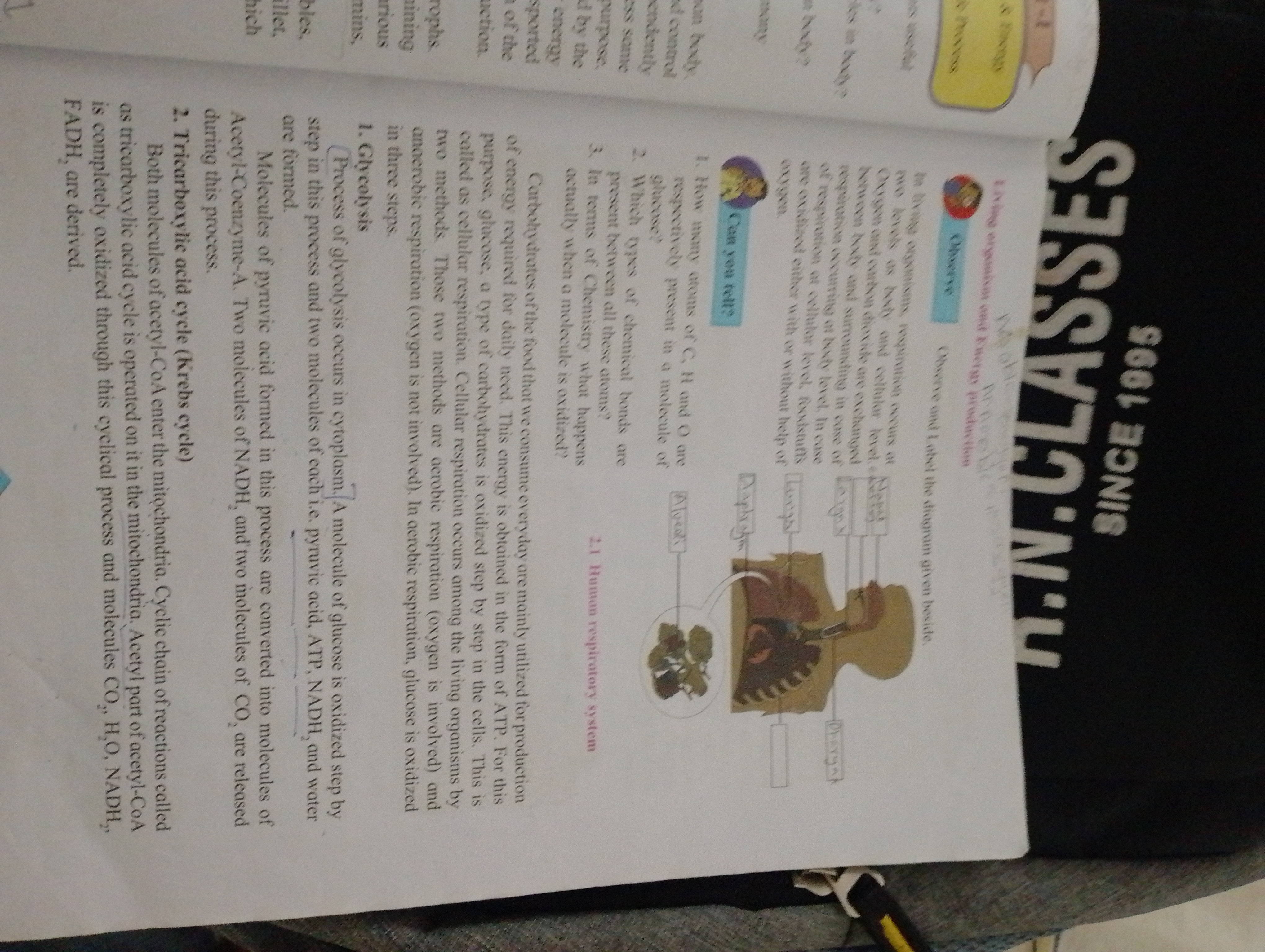What are the main steps involved in glycolysis and the Krebs cycle in cellular respiration?

Understand the Problem
The question is taken from a biology textbook and pertains to cellular respiration, specifically detailing glycolysis and the Krebs cycle. The focus is on the processes involved in these metabolic pathways and the molecules produced during the reactions.
Answer
Glycolysis and the Krebs cycle produce ATP, NADH, FADH2, and release CO2.
The main steps of glycolysis are the energy investment phase, where ATP is consumed, and the energy payoff phase, where ATP and NADH are produced. The Krebs cycle involves acetyl-CoA combining with oxaloacetate, leading to a series of reactions that produce ATP, NADH, and FADH2 while releasing CO2.
Answer for screen readers
The main steps of glycolysis are the energy investment phase, where ATP is consumed, and the energy payoff phase, where ATP and NADH are produced. The Krebs cycle involves acetyl-CoA combining with oxaloacetate, leading to a series of reactions that produce ATP, NADH, and FADH2 while releasing CO2.
More Information
Glycolysis does not require oxygen and occurs in the cytoplasm, while the Krebs cycle requires the products of glycolysis and occurs in the mitochondria. Together, they transform the energy stored in glucose into ATP, the energy currency of the cell.
Tips
A common mistake is to think glycolysis occurs in mitochondria; it actually occurs in the cytoplasm.
Sources
- Steps of cellular respiration | Biology (article) - Khan Academy - khanacademy.org
- Cellular Respiration - Biology LibreTexts - bio.libretexts.org
AI-generated content may contain errors. Please verify critical information